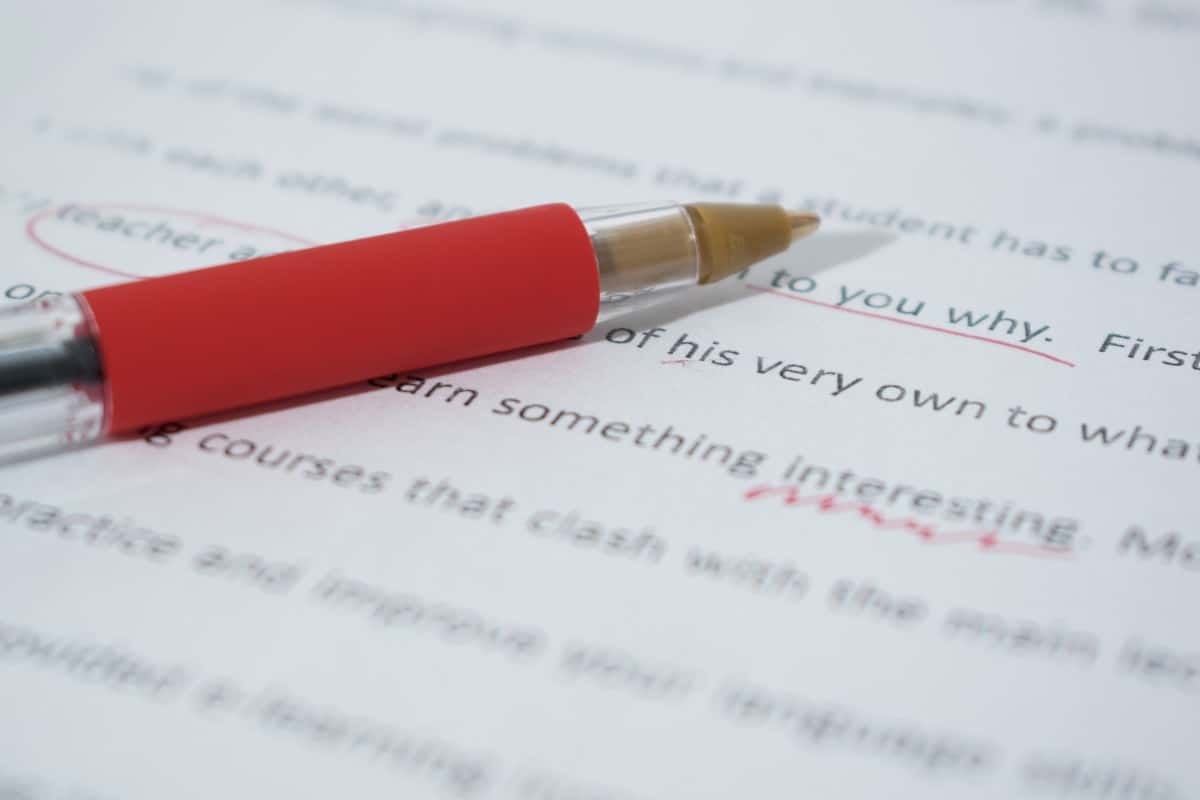How to Write a Great Autobiography: Creating a Compelling Personal Narrative
July 15, 2024
When most people think about writing an autobiography, they imagine leading an extraordinary life filled with adventure. What they often don’t realize is that everyone has a fascinating life story to tell. The secret lies in extracting and translating those unique experiences into a compelling format.
The main purpose of penning an autobiography is to share a story. The story can be one of personal growth and healing. Overcoming difficult experiences can provide a compelling backdrop for a gripping narrative. Producing an autobiography can also be a way to preserve your legacy for your heirs, giving them a better understanding of the generations preceding them.
Writing an autobiography can be a deeply personal and meaningful experience that allows the author to reflect on his or her life, share their stories, and leave a lasting legacy for generations to come.
Getting Started On Your Autobiography
Writing an autobiography is a personal journey. There’s no right or wrong way to do it. The most important thing is for you, as the writer, to be true to yourself and your story. Strive to share your experience in a way that feels authentic and meaningful to both you and your audience.
First Steps
While there’s no magic formula to writing an autobiography, the following steps are a good way to get started chronicling your life’s events. Above all, getting ideas down on paper is a key step in getting the project off the ground. Even if your initial ideas seem rough, the point is to build momentum that can lead to sufficient material for a workable draft.
Reflect on the Life You’ve Led
Before setting pen to paper, take some time to reflect on your life. Think about the people and events that have shaped you, the challenges you’ve faced, and the lessons you’ve learned. Make note of the major milestones and turning points in your life. What are the key themes and points you want to convey to your reader?
Create an Outline
Now, create an outline of your life story. Refer to the reflection exercise above to make sure you include key events and milestones, important people, and any major themes or lessons you want to convey. Outlining your major storylines helps your organize your thoughts and ensure that you don’t leave out any relevant points.

Brainstorm to create your outline of the overarching story.
It should include the major milestones, turning points, and themes you’ve already identified.
Keep in mind that outlines are not set in stone. They can change as needed.
Nevertheless, they serve as a roadmap to ensure structure throughout the writing process. Failing to outline the story may cause you to lose focus, leave out important information, and create a less effective autobiography.
A helpful strategy is to determine the core message you want to convey. Your message can focus on hope, resiliency, hard work, vision, etc. Focusing on a major theme helps you drive the storyline forward and avoid losing momentum.
Tone, Style, and Structure
Decide on the tone and style of the narrative. Is it going to be serious and introspective or more lighthearted and humorous?
Is your structure chronological or thematic? In a chronological format, the writer tells the story in the order in which the events occurred. In a non-linear format, the writer may jump around in time, focusing instead on different themes or experiences to structure the story.
Choosing a chronological or non-linear format depends on how you want to tell your story. While both are perfectly acceptable, you’ll need to commit to your chosen format. Mixing and matching chronological depictions and leapfrogging from one event to another throughout the story may confuse readers. Decide on the best format for your story and stay with it throughout the narrative.
An autobiography is a personal story and can be structured in any way you choose. Choose your format according to your personal style, the story you want to tell, and what feels right.
These decisions are crucial since they determine the overall path the book will take, creating the experience you want to give your audience.
Your Format: What to Include
The elements of your autobiography can vary depending on your preference, the purpose of the autobiography, and the structure you’ve chosen. Here are some common elements included in most autobiographies.
Introduction
The introduction should give your reader an overview of the story and introduce you as the writer.
Background Information
This section includes information about your family, childhood, and early years.
Major Life Events
These are the significant, formative events in your life, such as educational milestones, career accomplishments, and personal experiences.
Lessons Learned
Your story should include some reflection on your life experiences and the lessons you’ve learned. This process is crucial to giving your readers the overarching takeaways from your book.
Conclusion
The conclusion should wrap up the story and leave the reader with a sense of closure.
The Writing Process
Once you’ve created an outline and decided on the tone, style, and structure of your story, it’s time to start writing.
The following recommendations can guide you in translating a whirlwind of unforgettable moments into a compelling narrative.

Getting Started: Putting Pen to Paper
If you’ve decided on a chronological structure, you can begin with your earliest memories and then work forward chronologically.
If your structure is non-linear, you might start somewhere other than the beginning.
At this point, don’t worry about perfecting your writing. The point is to focus on getting the first few ideas down on paper.
Start with an Engaging Opening
A good autobiography should start with an opening that grabs the reader’s attention and makes them want to keep reading. You can start with an interesting anecdote, a surprising fact, or a thought-provoking statement.
From there, the main content of the story should build on the expectation you’ve set in your introduction.
Establish a Narrative Arc
A well-written autobiography should have a clear narrative arc with a beginning, middle, and end. This arc helps readers stay engaged and interested throughout the story, In particular, laying out a roadmap at the outset of the book lets readers know they’re on a journey with you, and what to expect by the end of the book.
Use Vivid and Descriptive Language
Using descriptive language that engages the senses makes your story come alive for your readers. Describing the people, places, and events in the story in vivid detail, using sensory elements like sight, sound, and smell, gives your reader a direct experience of the story you’re telling.
Show, Don’t Tell
Instead of simply telling readers what happened, show them by using dialogue and vivid descriptions. This approach will make the story more engaging and help readers connect with your experiences, thoughts, and emotions.
Be Honest and Authentic
Readers will be more likely to stay interested in your story if they feel that you’re honest and authentic. Strive to share your thoughts, feelings, and experiences openly and honestly throughout your narrative.
Mix It Up
Try to vary your writing style and tone within the narrative. Mix up long and short sentences, use different sentence structures, and vary your language and vocabulary. For instance, some sections may require a more serious or solemn tone, while others may be more lighthearted. But the overall tone and style of your narrative should remain consistent.
Include Details and Emotions
Strive for emotional resonance. Include specific details and emotions that help readers understand your experiences and how they connect with the larger story. By giving an emotional context to the people and events in your storyline, you’ll help your readers participate more directly in your story and share the perspective you’ve gained.
Engage the Reader
Just as you wrote an engaging opening at the start of your story, you’ll want to keep your readers’ attention throughout your narrative. Make your story engaging and memorable. Great autobiographies provide a unique perspective and a singular take on seemingly ordinary life events. The best autobiographies connect the indelible moments in the writer’s life to a more universal story.
The Editing Process: Creating Your Finished Product
Writing idea by idea will result in a workable first draft. A collection of ideas and thoughts can yield enough material to articulate the story in your mind.

Once you’ve completed a first draft, it’s time to go back and read through it, making edits and revisions as needed.
You may want to consider sharing your initial draft with a trusted friend or family member for feedback.
Bear in mind that this first draft is meant to establish the major storylines that you’ll then refine into a more polished draft.
That next draft will need further editing and revision before it reaches publication The editing process focuses on ensuring your narrative is well-written, engaging, and has a clear flow.
The editing and revision process can be lengthy and complex, and many authors lose momentum at this point. It can be challenging to weave your collection of ideas and stories into a fluid narrative.
Seeking professional writing or editing assistance at this stage can be tremendously helpful. Enlisting the services of a professional editor or experienced ghostwriter can help you produce a polished final draft ready for publication.
Finalize and Publish
After completing revisions and edits, it’s time to finalize the autobiography and consider publishing it. You may want to self-publish or seek the assistance of a literary agent to find a publisher. Self-publishing is the easiest way to get the book to market and is more cost-effective than ever. In contrast, seeking help from a literary agent can take longer to get the book published.
Above all, remember that an autobiography is a personal and unique story. So don’t worry about following a specific formula. The focus should be on telling your story in a way that feels authentic and engages readers.
Consider Professional Assistance
If you’re having trouble getting started or feeling overwhelmed, consider seeking professional help with your autobiography. There are many talented professionals who can guide you in writing and refining your story. Getting assistance from a professional ghostwriter or editor can help you realize your dream of telling your life story.
A Final Thought
The most important thing to remember as you begin your autobiography is that chronicling your life story isn’t a sprint. It’s a marathon. It requires careful thought, planning, and attention to detail to convey your core message with all the depth and richness of the anecdotes and experiences you want to share.
An autobiography is a personal exercise in introspection. It’s a powerful way of getting your story and your message out to the world.
Perhaps the most important recommendation, then, is to stay true to yourself and your beliefs. Authenticity makes an autobiography truly effective and memorable. If you follow sound principles for writing your autobiography and write authentically about your life experiences, your readers will respond, and your story will have the impact it deserves.






























